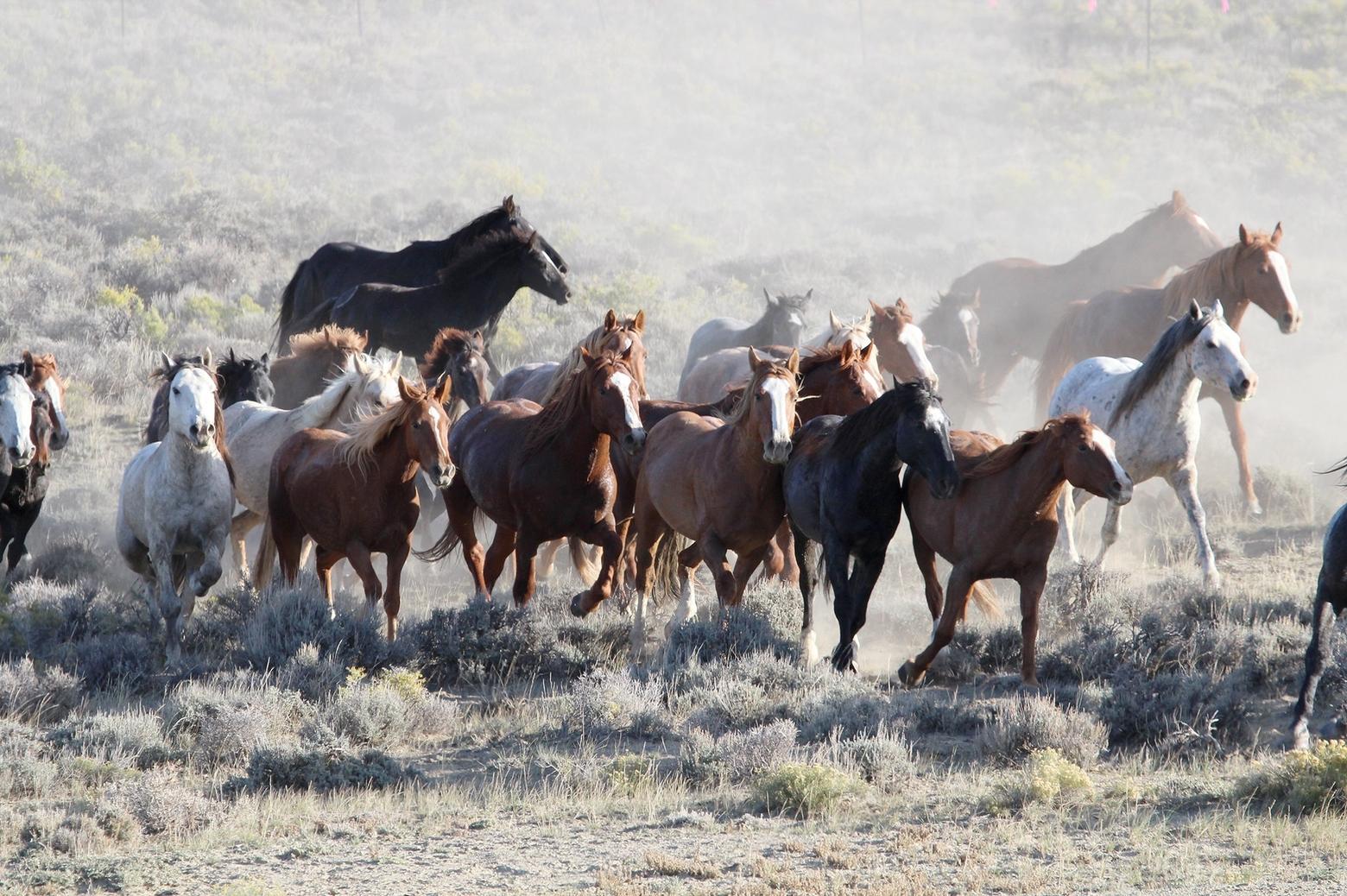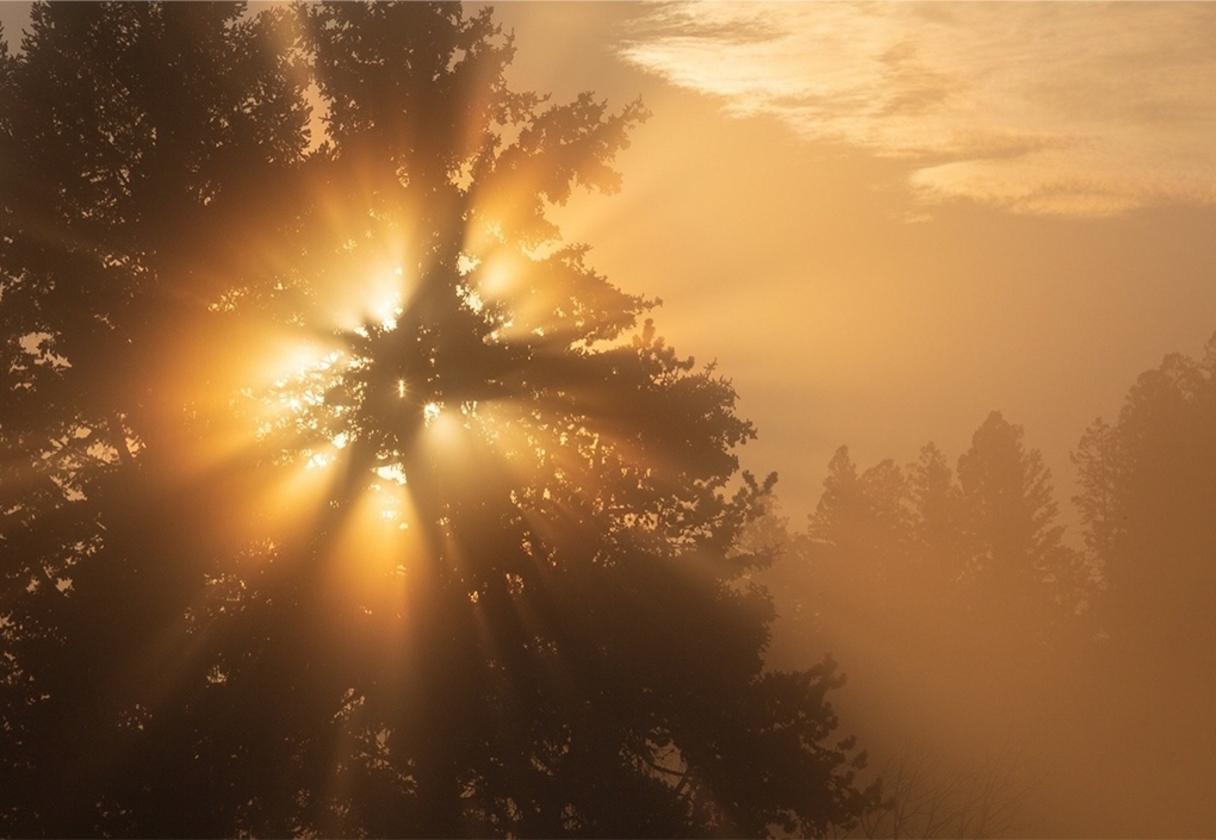Back to StoriesBLM to cut Wyoming’s Wild Horse Population by Half
June 17, 2025
BLM to cut Wyoming’s Wild Horse Population by HalfDespite mixed public opinion and legal challenges, agency will clear free-roaming horses from key Wyoming herds starting this summer
by Sophie Tsairis
The sweeping sagebrush sea of southwest Wyoming is about to change by the thousands. Starting this summer, the Bureau of Land Management will begin removing wild horses from roughly two million acres in the Great Divide Basin, Salt Wells Creek, and parts of Adobe Town in Southcentral Wyoming. The plan targets about 3,000 horses in the region.
As of early 2023, BLM estimated about 83,000 combined horses and wild burros roamed fragmented habitats in 10 western states covering roughly 27 million acres. In 1971, Congress passed the Wild Free-Roaming Horses and Burros Act, declaring wild horses and burros symbols of the historic and pioneer spirit of the West. The act tasked the BLM and U.S. Forest Service with the responsibility of determining and maintaining appropriate management levels.
According to BLM, horse herds can double in four to five years, quickly outgrowing the capacity of the landscape to support them. What to call these equines is a matter of ongoing debate. Terms like “wild,” “feral” and “free-roaming” are all used, however in its official proposal the agency refers to them as “wild horses.”
At the end of May, BLM released its plan to cut Wyoming’s wild horse population by nearly half. Current estimates suggest approximately 6,000 wild horses are spread across the state; it aims to manage that number down to just over 2,500.
In a public announcement last month, the agency said removal is necessary due to the region’s unique land ownership pattern. The area in question is checkerboarded land, where public and private parcels alternate. The removals follow the May 2023 land-use planning decision to help protect land health and resolve management conflicts in the region.
Wild horse advocates have fiercely opposed the proposal, arguing that removing entire herds violates the Wild Free-Roaming Horses and Burros Act, which is meant to protect the animals on public lands.
The BLM plan outlines that captured horses will be moved to the agency’s holding facilities, and many will eventually be put up for adoption. Officially, the agency said it does not sell horses for slaughter.
Critics point to a loophole that could allow adopted wild horses to end up in Mexican or Canadian slaughterhouses, often after passing through multiple hands. That concern recently led to a pause in the BLM’s $1,000 cash incentive program that paid individuals to adopt the horses. The agency paused the adoption incentive program after a federal judge ruled it plausible that it was inadvertently funding illegal slaughter pipelines.
The first roundup is scheduled to begin July 15, though BLM says the process could take several years to complete.
__________________________________________________________________________________________________
Mountain Journal is a nonprofit, public-interest journalism organization dedicated to covering the wildlife and wild lands of Greater Yellowstone. We take pride in our work, yet to keep bold, independent journalism free, we need the support of readers like you. Thank you.
Related Stories
December 10, 2024
Environmental Groups Challenge Federal Logging Project in Western Montana
Clark Fork Face Project in Montana’s Garnet Range prompts lawsuit against BLM over wildlife habitat concerns.
December 14, 2023
BLM Bans Lethal ‘Cyanide Bombs’ Used to Kill Predators
The ban, in place on 245 million acres for a minimum of five years, comes after M-44 cyanide devices killed non-target...
March 26, 2025
River Study Offers New Angle on Yellowstone Recreation
The Upper
Yellowstone Watershed Group report hopes to inform better management for a
cherished regional resource.





